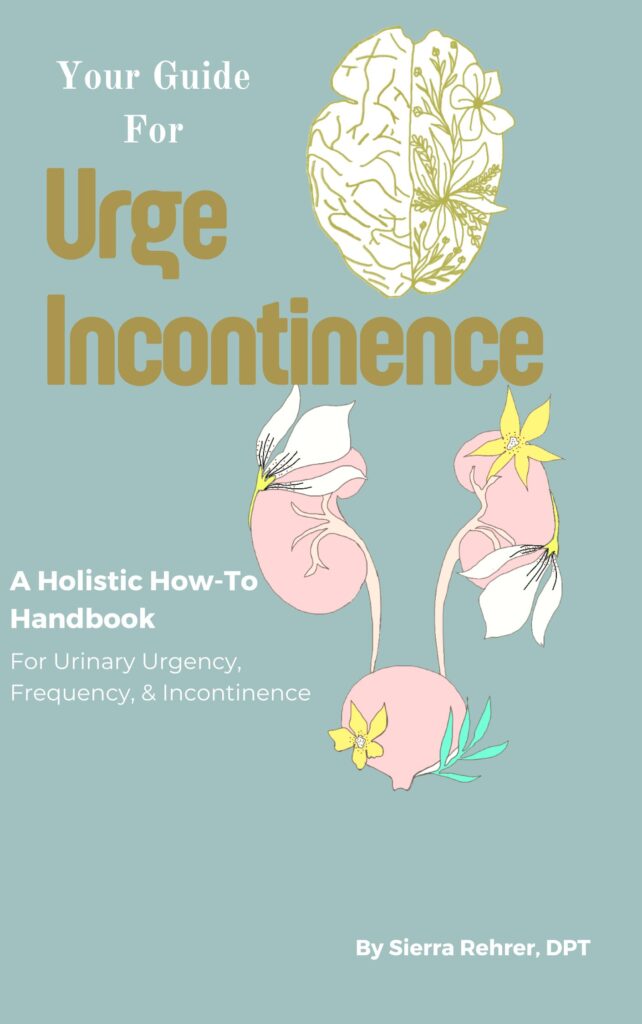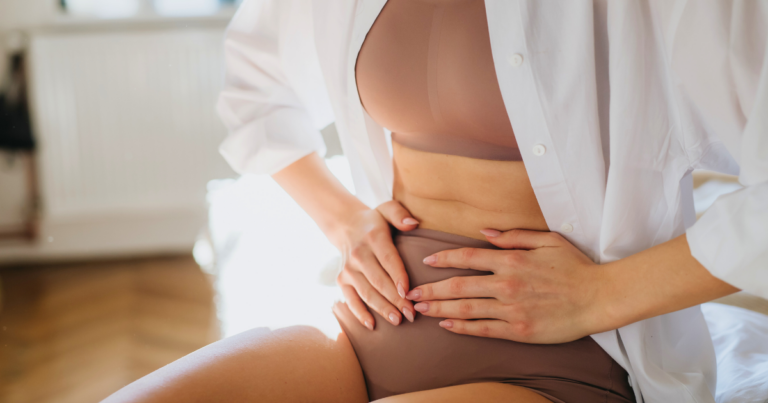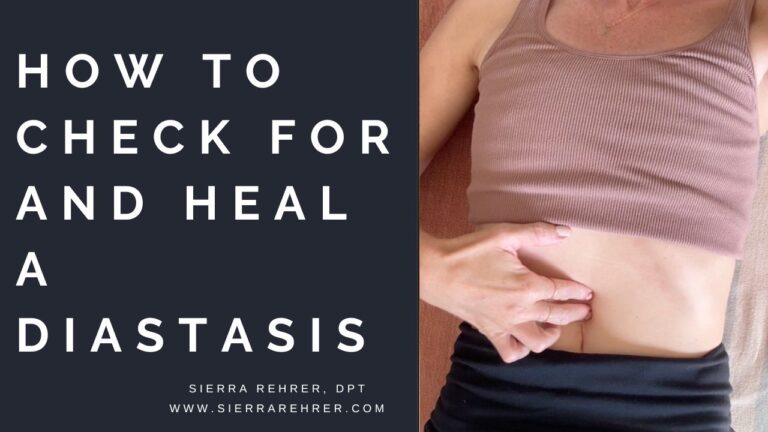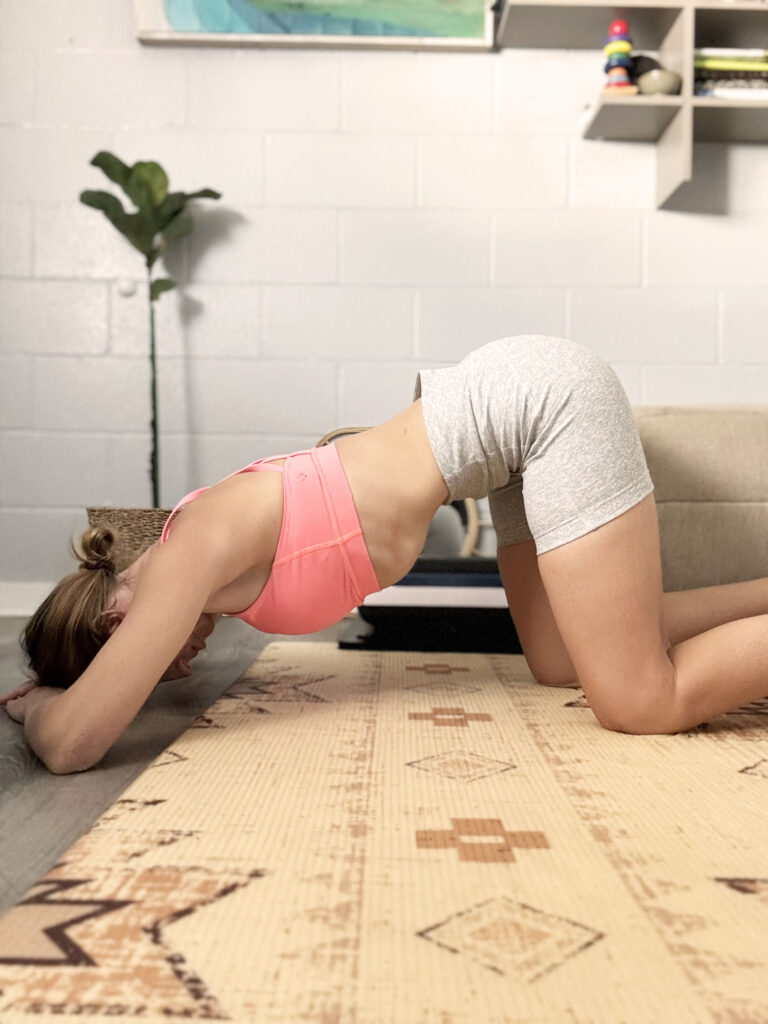How to treat urge incontinence at home
This post will share my biggest tips on how to treat urge incontinence at home. As a pelvic floor physical therapist for the past 8 years, I have seen so many women heal from urinary urgency and incontinence with just a few physical therapy visits. Why? Because so much of treatment for urge incontinence is in the mind! There really is power in knowledge. As you understand how the bladder and the brain work together, you will feel empowered to treat your urge incontinence at home.

What is urge incontinence?
Urge incontinence is a urinary (or fecal) incontinence that happens when a person gets a strong, uncontrollable urge to void, which results in a leak or full release of the bladder.
Common terms related to urge incontinence:
- Urge: The sensation from the bladder when it is time to release urine.
- Incontinence: Leakage of urine from the bladder or feces from the rectum.
- Urgency: A strong feeling of urge.
- Voiding: The act of releasing urine from the bladder.
Causes of Urge Incontinence
1. Pelvic floor muscle weakness
The pelvic floor muscles stabilize the bladder to prevent leaking and keep us dry. Weakness of these muscles can cause difficulty stabilizing the bladder with a strong urge.
2. Pelvic Floor Muscle Tension
Pelvic floor muscle tightness can lead to overactivity/ hypertonicity of the pelvic floor muscles, and difficulty or inability to relax these muscles. This can lead to incomplete emptying and more frequency trips to the bathroom.
3. Anxiety/worry
When stress or anxiety arises, the body enters the “fight-or-flight” response. This response of the central nervous system happens when the sympathetic nervous system (SNS) is activated, which can increase bladder contractions, causing a significant feeling of urge and sometimes even leakage.
4. Voiding habits
There are common voiding habits that can contribute to urinary frequency, urgency, and urge incotntinence. These include:
- Going to the bathroom “just in case.”
- Hovering over the toilet- this can lead to incomplete emptying of the bladder.
- Rushing to the bathroom with a strong urge.
5. Insufficient Fluid Intake
Drinking less water or liquids may seem logical if you feel you are going to the bathroom frequently, but drinking less can worsen your symptoms. Drinking less water causes the urine in the bladder to be less diluted, more acidic, and more irritating, making the bladder want to empty more frequently.
How to treat urge incontinence at home
1. Urge Suppression Techniques
Working on suppressing those strong urges before going to the bathroom is imperative. To do this, it is helpful to understand urge a bit more. Take a look at the graph below, and you will see that this is how urge works:
- Urge begins.
- It grows.
- It peaks.
- Then it begins to subside.
- And eventually, it stops.
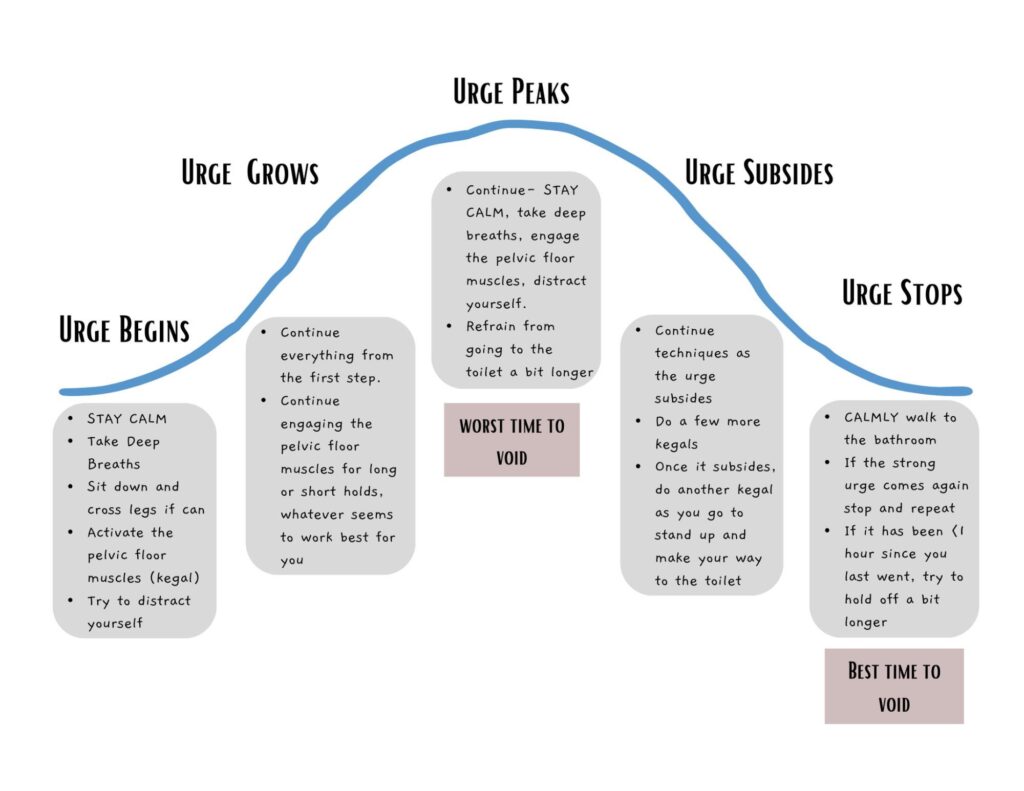
It is essential to understand this fact: “No matter how full your bladder is and how strong your urge is, your urge will go away with the right techniques.”
So what do you do? When you get a strong urge, follow these steps:
- Stay calm and sit down if you can. Crossing your legs can help.
- Engage the pelvic floor muscles (AKA doing a kegel). This can be done with long, sustained contractions or just quick, repetitive activations of the pelvic floor muscles.
- Try to distract yourself. Don’t focus on the feeling of urge. Instead, think about your grocery list, to-do list, or something else you can focus on.
- Take some deep breaths and focus on REMAINING CALM. Anxiety makes the urge stronger.
- Once the urge starts to subside, continue doing a few more pelvic floor muscle contractions.
- When the urge is gone, get up and CALMLY walk to the bathroom.
- Repeat this as many times as you need to avoid rushing to the bathroom.
2. Optimize Function of the pelvic floor muscles
Stronger pelvic floor muscles will assist in this urge suppression. If the pelvic floor muscles are weak, it can be difficult to control strong urges and stabilize the bladder to prevent leaking. To strengthen your pelvic floor muscles:
- 10 reps of 3-second activations of the pelvic floor muscles.
- 10 reps of 10-second activations of the pelvic floor muscles.
- 10 quick flicks of the pelvic floor muscles
If your pelvic floor muscles are too tense, you can work on relaxing or down training these muscles:
- Belly Breathing
- Hypopressive Breathing
- Pelvic relaxation stretches
- Pelvic floor muscle awareness
- Full body relaxation techniques
3. Fill out a bladder log
A bladder log (AKA bladder diary) can be very helpful in assessing and treating your urinary urge incontinence or urinary frequency. A bladder log is a sheet holding information regarding how much you drink in a day and how frequently you go to the bathroom during the day and night. This is very helpful to take to a physical therapist who specializes in pelvic health.
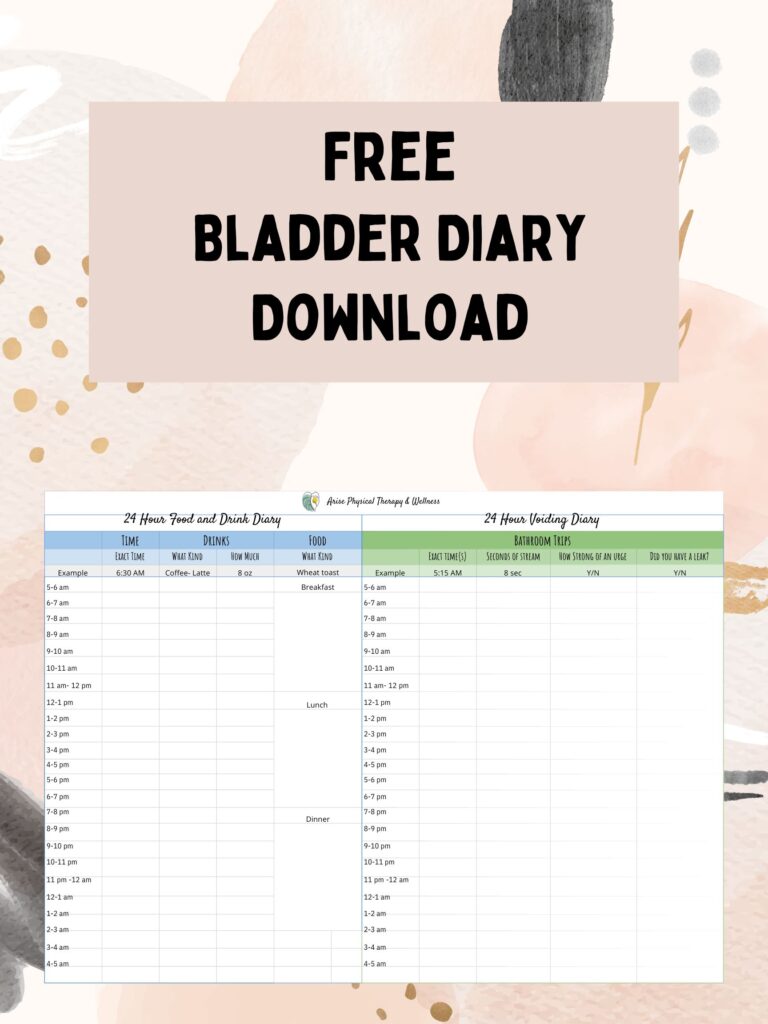
You can download a copy of my free bladder log below:
4. Fluid intake
It is recommended that a person drink 1/2 of their body weight in ounces in a day. Add 10 ounces if you did a good workout and 10 more if you live in a humid place.
5. see a pelvic floor physical therapist
Seeing a physical therapist specializing in pelvic health can be a huge benefit! I found that most of my clients found success in just a few visits of pelvic floor physical therapy for this condition.
summary of how to treat urge incontinence at home
This is a brief introduction on treating urge incontinence at home. There is so much more that you can do and try to treat your urinary urgency, frequency, and incontinence. But the good new is: it is treatable! As I mentioned above, I found in my practice that people got better within just a few visits of physical therapy. There is so much value in understanding the bladder and urinary system and how the pelvic floor contributes to that.
I actually wrote a book about this! It is expected to be out in early 2025. Sign up for notification below:
